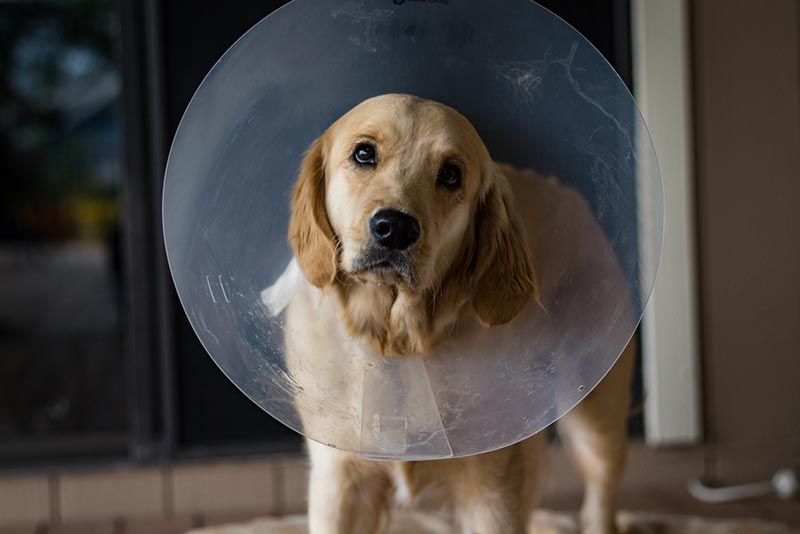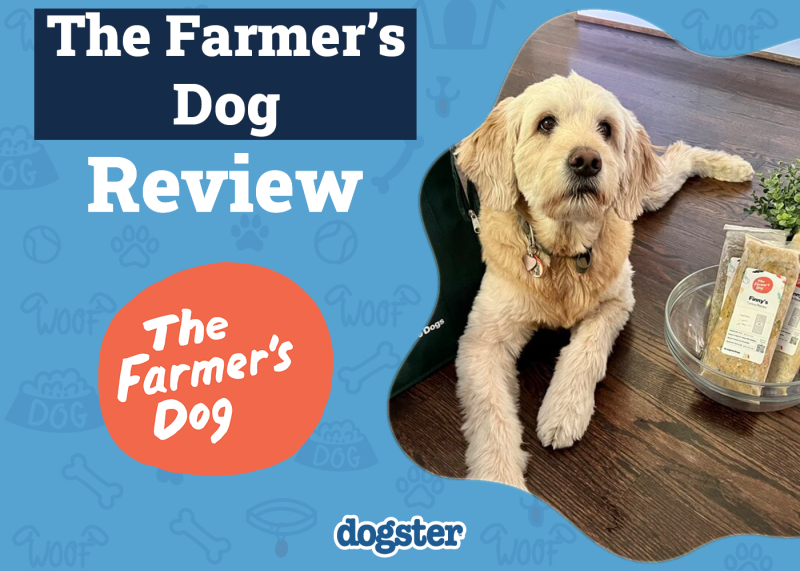In this article
If you just purchased a new dog and are looking to get them spayed or neutered, you might see information about people waiting up to 2 years before taking their pet in for the procedure, which can make many people wonder if that’s actually the right time to do it. The short answer is that it is never too late (unless there becomes a reason that your dog can’t have a general anesthetic) to have your pet spayed or neutered, so it’s fine to spay a dog when they’re 2 years old, but keep reading to learn the best time as suggested by experts and how to feel confident about your decision.

When Should I Spay or Neuter My Dog?
Traditionally, veterinarians used to recommend that you spay or neuter your dog when they’re at about 6–8 months old (unless you are going to use them for breeding) to help reduce the risk of several health issues, such as pyometra (infection of the uterus), mammary tumors, and testicular cancer. It can also help prevent undesirable behavior.
However, modern research is suggesting that some dogs should wait a bit longer, as their sex hormones are still playing an important part in their development. For these dogs (mostly large and giant breeds) waiting as long as 18 months is a better idea and in some cases waiting until your dog is over 2 years is recommended. It is very important that when you get a new puppy, you speak to a vet about the current guidance on when it is best to neuter or spay it. The guidance is changing as research continues, so up to date information can be sought from a vet. If your dog is 2 years old, they may be past the optimum time to neuter, or they may just be coming into a sensible time to neuter them; this depends entirely on your dog’s breed.


Factors That Affect the Timing of Spaying or Neutering Your Dog
Breed
Large dogs take longer to develop than small dogs. Therefore, it’s better to wait to have your pet spayed or neutered if you are raising a large or giant breed, like a Labrador Retriever, German Shepherd, Great Dane, Saint Bernard, Mastiff, etc. In fact, the current advice for female Golden Retrievers is to leave them unspayed (entire) because of the significantly higher risk of cancers in spayed female retrievers when compared to those left entire.
Sex
While there are a number of conditions that affect intact male dogs, there are many more that affect entire female dogs. Therefore it is more important to get female dogs spayed than it is males, but doing so at the appropriate time is crucial. It’s not quite as simple as the sooner the better. The risk of a bitch developing pyometra increases with each heat cycle, as does the risk of mammary tumors. However, there is a lot of evidence that spaying or neutering a dog too early can lead to an increased risk of a variety of cancers, joint disease and urinary incontinence. Therefore weighing up the risks on each side is important before booking your dog in for surgery.

Location and Temperament
Some dogs can have pronounced behavioral problems when they go into heat that can be difficult to control, especially for beginner dog owners. Another problem is that if you live in an area with many other dogs, there could be problems with roaming, unwanted pregnancies, and other issues. These factors may make it difficult to leave your dog entire for as long as is recommended.
Intended Use
Naturally, if you are going to be using your dog for breeding, you won’t get them fixed until later. It’s best to consult with a vet to determine the best time to transition out of breeding and get your pet spayed or neutered.
Did you know you can speak to a veterinarian without having to travel? Just head over to PangoVet. It's our online service where you can talk to a vet online and get the advice you need for your pet — all at an affordable price!


Benefits for Large Breeds to Wait
Waiting to have your pet spayed or neutered gives their sex hormones more time to do their work. This can be especially helpful for large breeds, as it allows more time for bone and joints to develop, which is thought to reduce the risk of orthopedic issues later in life, including cruciate ligament disease, a common condition in many dog breeds.
Waiting to have your pet spayed or neutered can also help reduce the risk of hip dysplasia, osteosarcoma, lymphoma and mast cell tumors. However, this reduction in risk must be carefully weighed up against the increased risk of mammary tumors and pyometra (in female dogs). In some large breeds, for example German Shepherds and Golden Retrievers, the increased risk of certain cancers in bitches spayed too early outweighs the risk of pyometra, so the advice is to wait or not neuter them at all. However, this advice changes with each breed.

Timetable for Spaying and Neutering Based on Breed
When deciding on the best time to get your pet spayed or neutered, their size is a useful tool. However, it isn’t as clear cut as that. Some small breeds e.g. Shih-tzu (females only) do have some increased risks when neutered early. It is always best to discuss the current research with a vet before making a decision. The table below lists some of North America’s most popular breeds and the current advice on neutering times. Where “owner’s choice” is stated, there is no current evidence that the age of neutering causes any increased risk of specific cancers, joint diseases or urinary incontinence.
| Breed | Ideal age to spay/neuter | |
| Male | Female | |
| Labrador Retriever | Over 6 months | Beyond 11 months |
| Golden Retriever | Beyond 11 months | Leave intact |
| German Shepherd Dog | Beyond 23 months | Beyond 23 months |
| Cocker Spaniel | Beyond 6 months | Beyond 23 months |
| Shih-Tzu | Owner’s choice | Beyond 23 months |
| Miniature Poodle | Beyond 11 months | Owner’s choice |

Frequently Asked Questions
What’s the Difference Between Spaying and Neutering?
Spaying refers to the removal of a female dog’s reproductive organs, including her ovaries and uterus, to prevent her from going into heat and getting pregnant. Neutering refers to removing the male dog’s testicles, which prevents reproduction.

How Can I Help My Dog Recover From Spay or Neuter Surgery?
To help your pet recover from spay or neuter surgery, try to keep them calm and restrict movement, if possible, for a few weeks. It is advised to have them wear a cone to prevent them licking their wounds. Another option to protect the wound is for your dog to wear a surgical vest. You must also inspect the incision site daily and contact the vet if you notice any problems.
Is Spay and Neuter Surgery Risky?
While there is always risk involved with any surgery, no matter how minor, spaying and neutering surgeries are extremely common, and the risk is very low.
How Much Will It Cost to Spay or Neuter My Pet?
Unfortunately, the cost of a spay or neuter surgery can vary dramatically depending on location, pet age, size, and several other factors. Some operations may cost as little as $50, while others can run as high as $500 or more. It usually costs much less to neuter than to spay. You can often find lower prices by watching out for events where shelters and other organizations offer reduced expenses. In some places, the government or charities might subsidize the surgery, particularly if you are on specific types of benefit.

Conclusion
The best time to spay or neuter your pet is a decision that you will need to discuss with a veterinarian, especially if you have a large breed like a German Shepherd or a Golden Retriever. There is an increasing body of research that states that in some breeds, waiting until your dog is over 2 years old can help with the dog’s development and reduce their chances of getting some cancers. Most small dogs can be spayed or neutered at around 5–6 months, although there are some breed discrepancies even amongst the small dogs. Some larger breeds are better off waiting 18-24 months before being neutered or spayed. While getting your pet spayed or neutered is a good idea in many ways (particularly if they are female), it is important to get up to date advice from a veterinarian regarding your dog’s breed and the best time for them to have the surgery.
- See also: Do Neutered Dogs Have Testicles?
Featured Image Credit: Kittima05, Shutterstock


















